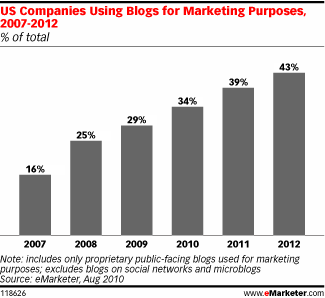
Credits: Pixelio
Social Media hat sich innerhalb kurzer Zeit zu einem neuen Element im Mix der Unternehmens-Kommunikation etabliert. Unternehmen und Agenturen erkennen zunehmend mehr Chancen, die ein Social Media Engagement bietet. Sei es in der Marketingkommunikation, in der PR, im Vertrieb, HR oder Sales. Über die neuen Möglichkeiten wird nicht nur diskutiert, es finden sich immer mehr Unternehmen, die Social Media in mindestens einem Bereich installieren. Auch wenn sich viele Engagements noch in der Versuchsphase befinden, so ist bereits zu erkennen, dass Unternehmen Social Media ernster nehmen als noch vor einigen Monaten.
Viele Unternehmen lagern ihr Social Media Engagement an Agenturen aus, bei anderen werden neue Abteilungen und Verantwortlichkeiten geschaffen. Von Social Media Beratern, Social Media Managern und Evangelisten ist die Rede. So manche versuchen, auch eine Hybrid-Funktion aus traditioneller Jobbeschreibung und „soziale Zusatzaufgabe“ zu erschaffen.
Social Media Verantwortliche erhalten weitreichende Verantwortlichkeiten, die es in dieser Form selten vorher im Unternehmen gab. Sie können meist ohne vorherige Abstimmungen über das Unternehmen im Netz sprechen. Sie werden zur Stimme, zum Gesicht, zum Aushängeschild. Doch was passiert mit dem Engagement, wenn Social Media Verantwortliche das Unternehmen verlassen? Verlieren Social Media Aktivitäten damit ein „Gesicht“, eine „Stimme“ im Netz?
Social Media sollte unserer Meinung nach daher immer auf drei Säulen aufgebaut sein, um es nachhaltig im Unternehmen zu verankern. Ob die Konzentration auf eine Person vorteilhaft, bzw. das Auslagern der Aktivitäten auf Agenturen sinnvoll ist, steht hierbei als Frage im Mittelpunkt.
Marken (statt Personen): “Vermenschlichung durch Authentizität der Personen”, oder kann die Marke das selbst?
Social Media soll authentisch sein, transparent und dialogorientiert. Um diese Bedingungen erfüllen zu können, bedarf es nicht nur einer Strategie, sondern Menschen, die eine Marke leben können und der Marke im Netz eine Stimme verleihen, die Unternehmenswerte vermittelt. Oftmals ist die Stimme eine Person, die auf Kommentare, Retweets etc. reagiert. Dieser Mensch verleiht der Stimme im Netz einen eigenen Charakter. Wie reagiert die Stimme auf Kommentare? Wie geht sie mit Followern um? Inwieweit lässt sie sich auf einen Dialog ein? Natürlich kann man versuchen, alle Maßnahmen genauestens zu konzipieren, Social Media ist aber schnell, schneller als jedes Konzeptpapier. Und zu viel Konzeption schadet dem Engagement, sowie der Authentizität. Also muss ein Unternehmen nicht nur auf eine Person setzen, sondern auf die Vermenschlichung der Marke.
Organisationskultur: Mehrere Personen im Unternehmen stützen den Social Media Auftritt
Social Media Aktivitäten sollten niemals auf eine Person fokussiert werden, sondern immer mehrere Personen aus verschiedenen Abteilungen einbinden. Im Idealfall gibt es einen Markenauftritt im Social Web, der von verschiedenen Personen betreut wird, die wiederum selbst aktiv als Person auftreten können. In der Kombination Marke / Person können vielerlei Synergien entstehen, die den Auftritt als Ganzes ,als “unternehmerische Menschheit”, stützen. Fällt eine Person aus, können die Maßnahmen schnell vom Social-Media-Team übernommen werden, ohne dass ein Bruch in der Transparenz der Kommunikation zu befürchten ist. Besonders in Urlaubszeiten scheint das Problem der Verlagerung bzw. des Management von Social-Media-Aktivitäten durchaus brisant zu sein. Wir hören bereits von mehreren Seiten, dass aufgrund der Umsetzung von nur einer Person hier ein eklatantes Problem entstehen kann. Denn eines ist gewiss: Auch Social Media Betreuer brauchen eine Auszeit.
Automatisierte Prozesse, oder… Das perfekte Zusammenspiel zwischen Mensch und Technik
In der beobachtenden Analyse setzen viele Unternehmen bereits erfolgreich auf Social-Media-Monitoring-Tools, die wertvolle Ergebnisse zu Tage bringen. Die Reaktion selbst auf bestimmte Anlässe wird aber immer noch vom Mensch bestimmt, definiert, organisiert und orchestriert. An dieser Stelle sollte unserer Meinung nach, automatisierte Prozesse Unterstützung leisten, wie dies zum Beispiel auch Online-Marketing bereits erfolgreich eingesetzt wird. Dank Targeting, Frequency Capping oder dynamischen Updates werden Online-Kampagnen schnell optimiert und damit auch erfolgreich. Für Social Media sind solche automatisierten Prozesse zwingend zur Entlastung und taktischen Optimierung notwendig und dienen der Unterstützung der Verantwortlichen. Sie lassen Social Media auch langfristig ein wertvolles Instrument der Kundenbindung zu werden.
Spot On!
Diese 3-Säulen-Strategie soll Unternehmens- und Abteilungsverantwortlichen einen Denkansatz beim Einsatz und der Optimierung von Social Media im Unternehmen liefern. Der sinnvolle Einsatz von Social Media Entschleunigung im Unternehmen (Slow Media Manifest) sowie produktivitätssteigernde Wex-Experten in Unternehmen (Personal Web Manager) sind hierbei zukunftsweisende Visionen für eine effiziente soziale Online-Unternehmenskultur. Denn nur, wenn wir sinnvoll mit unserer Zeit umzugehen lernen, kann eine 3-Säulen-Strategie das Social Media Engagement eines Unternehmens unterstützen und sich im Sinne der Wertschöpfungseffizienz manifestieren und dieser sinnvoll nützlich sein.
 Über die Autoren…
Über die Autoren…
Für die Idee zu diesem Post haben Heike Bedrich und ich die Köpfe auf dem Internet World Kongress zusammengesteckt. Uns hat die 3-Säulen-Strategie gefallen und ist unserer Überzeugung nach, ein guter Schritt für Unternehmen in eine erfolgreiche Social Media Welt.
Heike Bedrich ist seit vielen Jahren in der PR- und Marketing-Welt zu Hause. 1998 gründete sie mit Talisman ihre eigene Agentur für Kommunikation und Imagebildung. Sie betreut Kunden aus der IT- und Medienszene und hat sich auf die Themen PR, PR 2.0, Corporate Communications und Online Reputation Management spezialisiert.
 Die aktuelle Studie „netz98 fragt nach – Einfluss sozialer Elemente im E-Commerce auf das Kaufverhalten“ des Marktforschungsunternehmens eResult GmbH im Auftrag der Internetagentur netz98 new media GmbH besagt, daß für fast 50% der Internet-Kunden Bewertungen und Empfehlungen anderer Kunden ein wichtiges Argument sind, überhaupt online einzukaufen. Gegenüber dem traditionellen Shopping biete Online Shopping mit dem Zugriff auf die Meinungen unabhängiger Verbraucher einen klaren Mehrwert.
Die aktuelle Studie „netz98 fragt nach – Einfluss sozialer Elemente im E-Commerce auf das Kaufverhalten“ des Marktforschungsunternehmens eResult GmbH im Auftrag der Internetagentur netz98 new media GmbH besagt, daß für fast 50% der Internet-Kunden Bewertungen und Empfehlungen anderer Kunden ein wichtiges Argument sind, überhaupt online einzukaufen. Gegenüber dem traditionellen Shopping biete Online Shopping mit dem Zugriff auf die Meinungen unabhängiger Verbraucher einen klaren Mehrwert.











